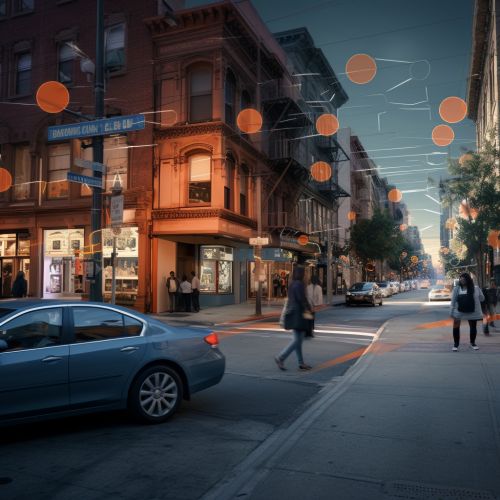Object detection
Introduction
Object detection is a computer technology related to computer vision and image processing that deals with detecting instances of semantic objects of a certain class (such as humans, buildings, or cars) in digital images and videos. This technology has been widely applied in various fields including video surveillance, autonomous driving, and object tracking.
History
The history of object detection can be traced back to the late 20th century. Early methods for object detection included template matching, where a template of the object to be detected is slid over the image and a similarity measure is computed at each position. The positions with the highest similarity are considered as detections.


Techniques
There are several techniques used in object detection, which can be broadly classified into two categories: traditional methods and deep learning methods.
Traditional Methods
Traditional methods for object detection involve feature extraction and machine learning. The features are extracted from the image to form a feature vector, and a classifier is trained using these feature vectors. The classifier then determines whether an object is present in the image or not. Some of the traditional methods include:
- Scale-Invariant Feature Transform (SIFT): This method detects and describes local features in images. The features are invariant to image scale and rotation, and are shown to provide robust matching across a substantial range of affine distortion, change in 3D viewpoint, addition of noise, and change in illumination.
- Speeded Up Robust Features (SURF): SURF is a robust image detector and descriptor that is used in a wide range of tasks, such as object recognition, robotic mapping and navigation, image stitching, 3D modeling, gesture recognition, and video tracking.
- Histogram of Oriented Gradients (HOG): HOG is a feature descriptor used in computer vision and image processing for the purpose of object detection. The technique counts occurrences of gradient orientation in localized portions of an image.
Deep Learning Methods
Deep learning methods for object detection make use of neural networks, particularly Convolutional Neural Networks (CNNs), for automatic feature extraction and detection. Some of the popular deep learning methods include:
- Region Proposal Network (RPN): RPN is a fully convolutional network that simultaneously predicts object bounds and objectness scores at each position.
- You Only Look Once (YOLO): YOLO frames object detection as a regression problem to spatially separated bounding boxes and associated class probabilities.
- Single Shot MultiBox Detector (SSD): SSD is a method for detecting objects in images using a single deep neural network. It discretizes the output space of bounding boxes into a set of default boxes over different aspect ratios and scales per feature map location.
Applications
Object detection has a wide range of applications in many different fields. Some of the notable applications include:
- Video Surveillance: Object detection is used in video surveillance to detect people, vehicles, or other objects of interest.
- Autonomous Driving: In autonomous driving, object detection is used to detect other vehicles, pedestrians, and road signs.
- Object Tracking: Object detection is used in object tracking to detect the object of interest in each frame of the video.
- Augmented Reality: In augmented reality, object detection is used to detect real-world objects so that virtual objects can be placed in relation to them.
Challenges
Despite the advancements in object detection, there are still several challenges that need to be addressed. These include:
- Scale variance: Objects in images can be of different scales due to the distance from the camera.
- Occlusion: Objects of interest can be partially or fully occluded by other objects.
- Viewpoint variation: The appearance of an object can vary significantly with the viewpoint.
- Intra-class variation: There can be significant variation within the same class of objects.
- Background clutter: The objects of interest can blend into the background, making it difficult to detect them.
Future Directions
The field of object detection continues to evolve with the development of new techniques and technologies. Some of the future directions in object detection include:
- 3D Object Detection: With the advent of 3D sensors, there is increasing interest in 3D object detection.
- Real-Time Object Detection: As applications such as autonomous driving and video surveillance require real-time object detection, there is a need for methods that can perform object detection in real-time.
- Few-Shot Learning: Few-shot learning aims to design machine learning models that can understand new concepts with very few examples.
